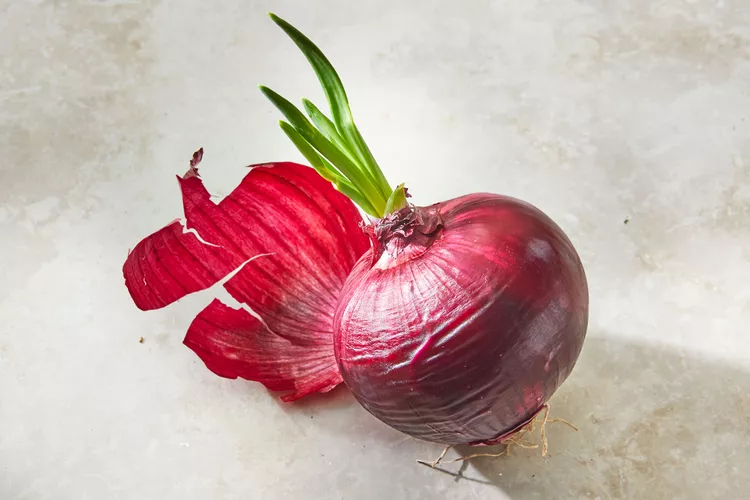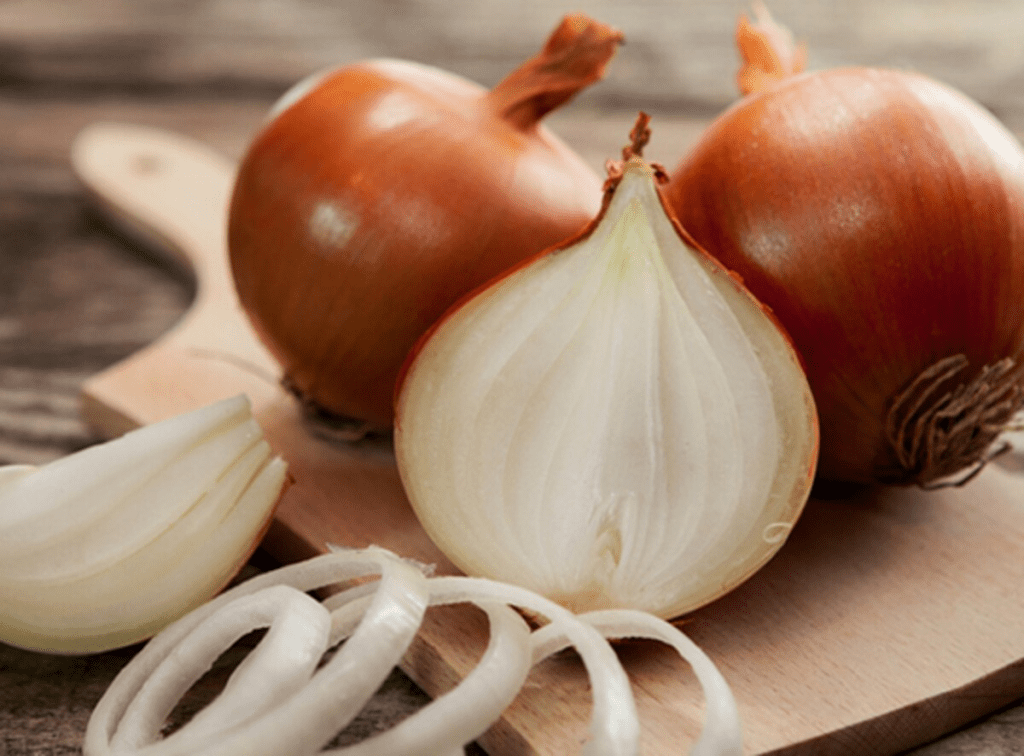As you reach for an onion to spice up your favorite recipe, you notice something unexpected—a green sprout poking out from the top. It’s a common sight for many home cooks, but it can leave you wondering: Is this onion still safe to eat, or should it be tossed? Before you throw it away, it’s worth understanding more about what sprouting means and whether sprouted onions are still good to use. These tips might save you both money and an extra trip to the grocery store!
What Does It Mean When an Onion Sprouts?

When you see a green stalk sprouting from the center of your onion, it’s a sign that the onion has begun to germinate. Onions are, after all, bulbs designed by nature to grow new plants under the right conditions. If your onion is exposed to enough light and warmth, it will naturally start the growing process, shooting up a sprout that would become a new onion plant if planted in soil.
Don’t panic when you see this—your onion isn’t necessarily spoiled. Sprouting is simply part of the onion’s life cycle and can occur when it’s stored in an environment that promotes growth, such as a warm, moist area. Understanding this can help you decide whether to save that onion or toss it.
Can You Still Eat an Onion That Is Sprouted?
The good news is, yes, you can still eat an onion that has sprouted. There is nothing harmful or toxic about using a sprouted onion in your cooking. However, the sprouting process can affect the onion’s texture and flavor. Sprouted onions tend to become softer and develop a slightly more bitter taste, which might not be ideal for some dishes, especially if you prefer your onions raw in salads or sandwiches.
If the onion is still firm and has only recently sprouted, it’s perfectly fine to use. Simply chop off the sprout, peel the onion, and use it as you normally would in your cooking. For best results, it’s a good idea to move sprouted onions to the top of your pile and use them as soon as possible before the texture and flavor degrade further.
What Can You Do With Onions That Have Sprouted?
Sprouted onions can still be put to great use in a variety of recipes, especially those that involve cooking or frying. The slightly softer texture and more pronounced flavor of a sprouted onion are less noticeable when the onion is cooked down, making them perfect for dishes like stir-fries, soups, stews, or roasted vegetables.
Best Uses for Sprouted Onions:
- Cooking or Frying: Sauté sprouted onions to release their natural sweetness, which helps mask any bitterness from the sprout.
- Garnishes: Chop the onion into small pieces and use it as a garnish on dishes like chili or baked potatoes.
- Salads and Salsas: If the onion hasn’t softened too much, it can still be used raw in salads or salsas, but be sure to remove the sprout if you don’t want to eat it.
You can also plant the sprouted onion to grow new onions! Simply plant the onion bulb in your garden or a pot, and you’ll have fresh onions growing in no time.
How Can You Tell If an Onion Is Bad?

Sprouting isn’t necessarily a sign that your onion has gone bad, but there are other clear indicators that it’s time to throw the onion out. Here are some signs to look out for:
Signs of a Bad Onion:
- Juice or Decay: If the onion is leaking fluid or feels mushy to the touch, it’s past its prime and should be discarded.
- Mold or Discoloration: Visible signs of mold or dark spots are a clear indication that the onion is no longer good to eat.
- Strong Odor: While onions naturally have a pungent smell, a musty or sour odor could mean that the onion has started to rot.
If you notice any of these signs, it’s best to throw the onion out and grab a fresh one. However, if the sprouted onion still feels firm, it’s perfectly fine to use, even if there’s a green stalk emerging.
How to Store Onions to Prevent Sprouting
Proper storage is key to preventing your onions from sprouting too quickly. Onions sprout when exposed to moisture and light, so the goal is to store them in a cool, dry, and dark place.
Best Practices for Storing Onions:
- Cool, Dark Place: Store onions in a pantry, cellar, or any area that is between 45°F and 55°F. Avoid areas with high humidity, as this can encourage sprouting.
- Avoid Sunlight: Onions should not be stored in direct sunlight, as this speeds up the sprouting process. Keep them in a dark environment to slow down their growth.
- Proper Ventilation: Store onions in a mesh bag or a well-ventilated container to allow air to circulate. This helps reduce moisture, which can lead to both sprouting and mold.

Avoid storing onions in the refrigerator. The cool, damp environment of a fridge can lead to moisture buildup, which promotes sprouting and decay. Also, keep onions separate from potatoes; onions emit ethylene gas, which can cause potatoes to ripen and spoil faster.
Conclusion: Don’t Toss That Sprouted Onion Just Yet!
In most cases, sprouted onions are still perfectly safe to eat, though they might not be as firm or sweet as a fresh onion. The sprouting process is a natural part of the onion’s life cycle, and with proper storage, you can prevent sprouting for longer periods. Sprouted onions are best used in cooked dishes where texture and flavor changes are less noticeable, but they can still add great taste to your meals.
So, the next time you spot a green sprout emerging from your onion, don’t be too quick to throw it away. A little knowledge about how to use and store onions will help you get the most out of your produce and prevent unnecessary waste.


